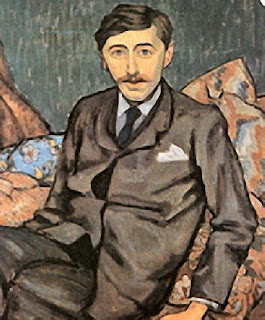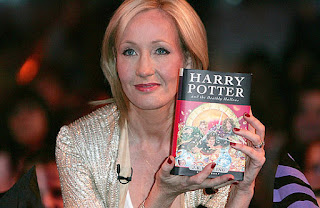They’ve written some of the most recognised lines, dreamt up characters whose fame goes beyond the novels of which they’re the subject, and imagined plots that have captivated readers for centuries. Stretching back over a thousand years, the British literary tradition is vast and shows no signs of coming to a halt. Here’s our guide to a mere handful of Britain’s most famous writers and their most celebrated works. EVERYONE should be familiar with them.
The Beowulf Poet
We don’t even know the name of the first famous writer on this list, but his or her composition is one of the most famous poems of all time. The Anglo-Saxon epic known as Beowulf was written sometime between the 7th century and the early 11th, though its exact dating is unknown. The 3,128-line tale – set in Scandinavia – depicts a world of heroes, kings and monsters, shedding a unique light on a period of history that we know comparatively little about. Its most famous scholar was J.R.R. Tolkien, who was influenced by Beowulf in his creation of his own mythological world, Middle Earth.
Geoffrey Chaucer

Geoffrey Chaucer is considered by many to be the Father of English Literature and the greatest poet of the Middle Ages. Born around 1343, he’s most famous for The Canterbury Tales, a series of stories (mostly in verse) based around a group of pilgrims travelling to the shrine of Thomas Becket. The pilgrims have a story-telling competition, resulting in each of the tales being called by the character telling them – The Knight’s Tale, The Miller’s Tale, and so on. Chaucer was instrumental in developing the use of the vernacular Middle English, during a period when most works of literature were being written in Latin or French.
It’s hard to know where to begin when describing the works of possibly the most famous writer of all time, William Shakespeare. Also known simply as “The Bard”, Shakespeare’s works are so numerous, so universally admired, and his characters so memorable, that his output has never been equalled. His characters includeHenry VIII

 Ophelia
Ophelia

 and the Merry Wives
and the Merry Wives
and Lear
 and Romeo and Juliet
and Romeo and JulietThe Elizabethan playwright, born in 1564, continues to captivate audiences with tales of star-crossed lovers in Romeo and Juliet, make audiences ache with laughter at the antics of his mischievous knight Sir John Falstaff in Henry IV Parts 1 and 2, make us recoil in horror at the violence of Titus Andronicus, and inspire romance with his beautiful sonnets. His 37 plays are still performed all over the world every single day, most notably by The Royal Shakespeare Company, headquartered in Shakespeare’s hometown of Stratford-upon-Avon, which counts among its acclaimed productions some of the world’s most famous actors.
William Wordsworth
Another famous poet named William was born in 1770 and helped develop a new literary movement called Romanticism, which saw a new focus on nature and emotion. Famously penning the words “I wandered lonely as a cloud”, Wordsworth is most strongly associated with the Lake District region of England, the beautiful landscape of which was a big inspiration for him. Wordsworth was Poet Laureate from 1843 until he died in 1850, and he’s also noted for The Prelude, a semi-autobiographical poem published after his death.
Jane Austen
Pride and Prejudice was runner-up in a 2003 poll to find Britain’s best-loved book.
The author of such literary classics as Pride and Prejudice and Sense and Sensibility has a deserving place among Britain’s most famous writers. Born in 1775, Jane Austen is known for six novels, all set among the aristocracy and fundamentally romantic, but each also containing much humour and social commentary. Her novels have inspired numerous television and film adaptations, which have served to widen her appeal still further. Characters including Elizabeth Bennet, Mr Darcy, Emma, Marianne Dashwood and many more are familiar to millions of readers around the world, though Austen herself was not famous during her lifetime; she was writing at a time when female writers weren’t taken seriously, so her works were published anonymously while she was alive. It’s hard to believe it now, but her fame was only achieved posthumously, following the publication of a biography by her nephew.
George Eliot
While Jane Austen published anonymously to ensure her work would be taken seriously, Mary Ann Evans used a male pen name to ensure the same, with the result that we know her by the somewhat unfeminine name of George Eliot. Born in 1819, George Eliot wrote several of the most famous works of English literature, including Silas Marner, The Mill on the Floss and Adam Bede. But the crowning glory of her literary output was Middlemarch: a masterpiece of social commentary and a novel considered to this day to be one of the greatest ever written in the English language.
The Brontë sisters
Elizabeth Gaskell’s 1857 biography of Charlotte Brontë established the family’s fame.
The Brontë sisters were contemporaries of George Eliot, living in a parsonage on the Yorkshire moors. There were three of them: Charlotte, born in 1816; Emily, born in 1818; and Anne, born in 1820. Like George Eliot, they wrote under male pen names: Currer, Ellis and Acton respectively. Their works earned attention for their unbridled passion, which was unusual for the time and not always well-received. They all died young, but between them, these remarkable sisters wrote some of the most famous novels in English literature, including Jane Eyre by Charlotte, Wuthering Heights by Emily and The Tenant of Wildfell Hall by Anne.
Charles Dickens
Born in 1812, the Victorian novelist Charles Dickens – considered by many to be the greatest of his age – is responsible for some of the most widely recognised fictional characters ever created. From Oliver Twist and David Copperfield to Ebenezer Scrooge and Miss Havisham, Dickens’ characters are one of the best aspects of his imaginative novels, and just one of the ingredients of his literary genius. His many celebrated novels include Great Expectations, Bleak House, Nicholas Nickleby, A Christmas Carol, The Old Curiosity Shop and The Pickwick Papers. Dickens was a literary celebrity on an unprecedented scale, and one of his many novels – A Tale of Two Cities – is the best-selling novel of all time. His literary influence is so great that his name has spawned a new adjective – “Dickensian” – which means anything reminiscent of his works, particularly as regards the poverty he so vividly describes (though it’s often also used to refer to people who call to mind some of his entertainingly horrible characters).
Thomas Hardy
Thomas Hardy was born in Dorset in 1840.
Thomas Hardy was a younger contemporary of Charles Dickens, born in 1840. His style was rather different, but he was influenced by Dickens and achieved wide literary acclaim in his own right, both as a novelist and, later, a poet (indeed, he considered himself to be more a poet than a novelist, writing novels mainly for the income they brought). While Dickens’ novels tended to be set in an urban environment, Hardy’s focus was the countryside and its decline. Many of his works are set in Wessex, a partly real, partly imagined rural region that harked back to England before the Norman Conquest. His hugely successful novels include Far From the Madding Crowd, Jude the Obscure, Tess of the D’Urbervilles and The Mayor of Casterbridge.
E. M. Forster
E.M. Forster was born in 1879 and is famous for novels including A Passage to India, Howard’s End and A Room with a View. Though his works achieved admiration during his lifetime, they’re best known to readers today through the popular series of film adaptations by Merchant-Ivory Productions. Forster’s works focus primarily on the Edwardian middle classes in different situations; for example, together with Where Angels Fear to Tread, A Room with a View looks at the narrow-mindedness of English tourists in Italy. A Passage to India was Forster’s most successful novel; it concentrates on the relationship between West and East at a time when India was subject to British rule.
Wilfred Owen
The horrors of the First World War inspired a new generation of poets to write some of the most well-known lines in English poetry, and among the most famous was Wilfred Owen. Owen’s poems graphically describe gruesome scenes from the trenches with brutal realism. His most celebrated poem, Dulce et Decorum Est, depicts the effects of an attack by poison gas, and continues to be recited at commemorative events to this day. Its title is ironic, referring to a line by the Roman poet Horace: “Dulce et decorum est pro patria mori”, which translates roughly as, “It is sweet and honorable to die for one’s country”. Tragically, Owen lost his life just a week before the end of the war, and most of his poems were published after his death.
Evelyn Waugh
Evelyn Waugh is best known for his novel Brideshead Revisited, though he wrote several other well-received novels and was also an accomplished journalist. He was born in 1903 and attended Oxford University, where his experiences were the inspiration for many of the Oxford scenes for which Brideshead Revisited is so famous. The novel was successful at the time of its publication, but it achieved a new following decades later with the release of a long television adaptation starring Jeremy Irons. To this day, there will always be a handful of Oxford undergraduate each year trying to emulate the hedonistic lifestyle of Charles and Sebastian – including, of course, the mandatory teddy bear (inspired, it is said, by the poet John Betjeman’s bear).
J.R.R. Tolkien
There was seemingly no end to the imagination of one of the greatest 20th century English writers. J.R.R. Tolkien (whom we’ve already encountered as a Beowulf scholar) didn’t just pen epic works of fantasy; he created an entire mythology to go with them, complete with languages, maps, chronologies and genealogies. Middle Earth, as he called his extraordinarily detailed imaginary world, was the setting for hugely successful novels including The Hobbit – intended primarily for children – and the rather darker three-volume epic The Lord of the Rings, which has been voted by Amazon readers as their favourite book of the millennium.
Agatha Christie
David Suchet has played Agatha Christie’s detective Hercule Poirot in ITV adaptations of all 33 novels and numerous short stories.
Agatha Christie is Britain’s most famous crime novelist, the author of 66 detective novels and creator of two of the most well-known literary sleuths, Hercule Poirot and Miss Marple. According to the Guinness Book of Records, Christie is the best-selling novelist of all time; she’s often referred to as “the Queen of Crime” for her mastery of suspense. Her titles include Murder on the Orient Express and Death on the Nile, which were also two of the most popular film adaptations of her works.
J.K. Rowling
Bringing this list right up to date, we end with J.K. Rowling, author of the phenomenally successful Harry Potter series – seven books that tell the tale of the eponymous young wizard and his battle to save the world from the onslaught of the evil wizard Voldemort. The world Rowling created has captured the imaginations of children and adults alike, in particular the school at the centre of the story, Hogwarts School of Witchcraft and Wizardry. Though Rowling’s novels arguably lack the literary merit of the other novels we’ve mentioned in this article, she’s certainly one of the most famous British writers of modern times, and therefore worthy of a place on this list. She’s now turned her attention to writing books for adults, assuming the pseudonym Robert Galbraith in an attempt to have her writing viewed independently of the success of the Harry Potter series.














Nessun commento:
Posta un commento